Physical Address
304 North Cardinal St.
Dorchester Center, MA 02124
Physical Address
304 North Cardinal St.
Dorchester Center, MA 02124
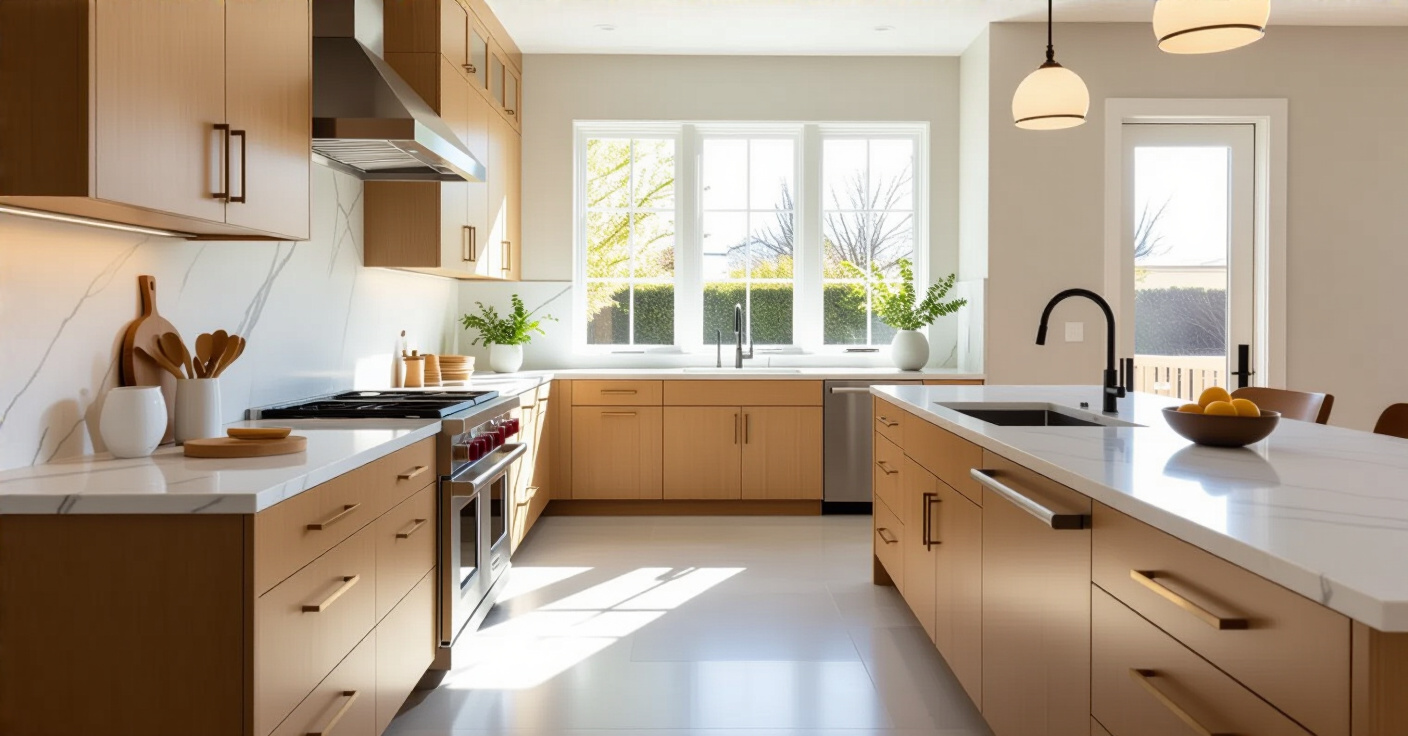
Discover 23 thoughtful kitchen backsplash design principles for a warm, minimalist, and timeless renovation. Find ideas for materials, patterns, and sustainable choices.
Can we talk about why everyone seems to get the kitchen backsplash wrong? I see it all the time—people treat it as a last-minute decorative flourish, a place to splash a loud pattern or a trendy color that will feel dated in a year. They see it as jewelry for the kitchen. But in Nordic design, we believe a home’s elements should be more than just decoration. They must have purpose, honesty, and a quiet sense of permanence.
The truth is, your backsplash isn’t the star of the show. You are. The life you live in the kitchen is. The backsplash is the calm, beautiful, and functional backdrop for all of it. I’ve helped countless people design their homes, and the ones who are happiest long-term are those who understand this. They choose a design that serves them, that feels good to touch and is easy to live with. These 23 principles aren’t just a list of ideas; they are a guide to creating a kitchen that feels like a refuge, not a showroom.
Before you even think about tile, we need to talk about the ‘why’. A successful design doesn’t start in a store; it starts with a deep understanding of your space and how you live within it. This is the foundation. If we get this right, everything that follows becomes simple and clear. This isn’t about chasing trends; it’s about uncovering the honest needs of your home.
Look around your kitchen. Really look. What do you see? What are the materials of your cabinets? The countertops? Notice the way the light hits them. Your new backsplash needs to join this family of materials, not shout over them. The goal is harmony, a seamless flow that makes the entire room feel unified and calm. Don’t think about “matching,” but rather “complementing.” Does your granite have a warm undertone? Then a cool, stark white tile might feel jarring.
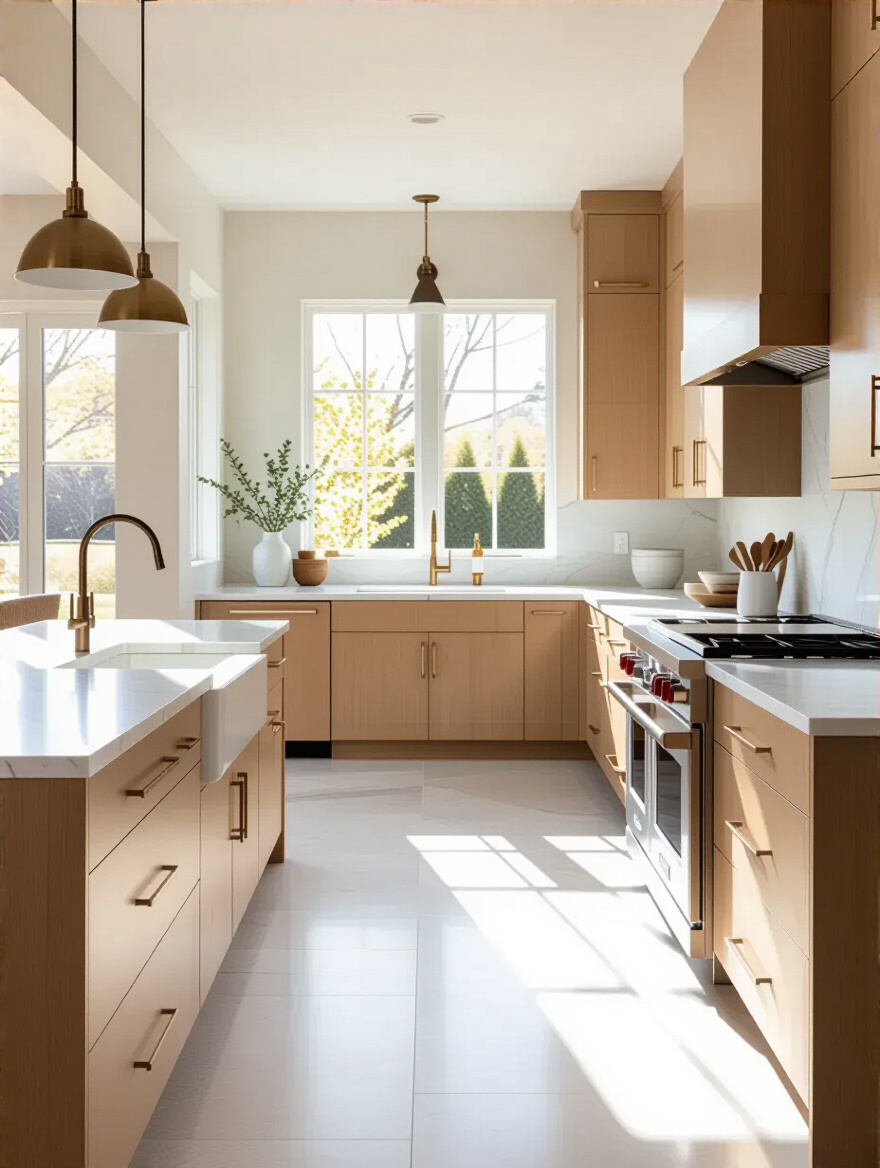
This isn’t about being boring; it’s about creating a canvas. I once worked with a family whose kitchen felt chaotic. They had beautiful dark wood cabinets and a busy countertop. They wanted a vibrant mosaic backsplash. Instead, I guided them to a simple, handmade ceramic tile in a soft cream color, pulling the lightest tone from the countertop. The room instantly felt settled. The beautiful wood cabinets could finally breathe. It’s about letting each element have its space.
Let’s be practical. A budget isn’t a restriction; it’s a tool for focus. Knowing your budget frees you from the noise of a thousand options and allows you to concentrate on finding the highest quality materials within your reach. It is always better to have a simple, honest material installed perfectly than a cheap imitation of something expensive installed poorly.
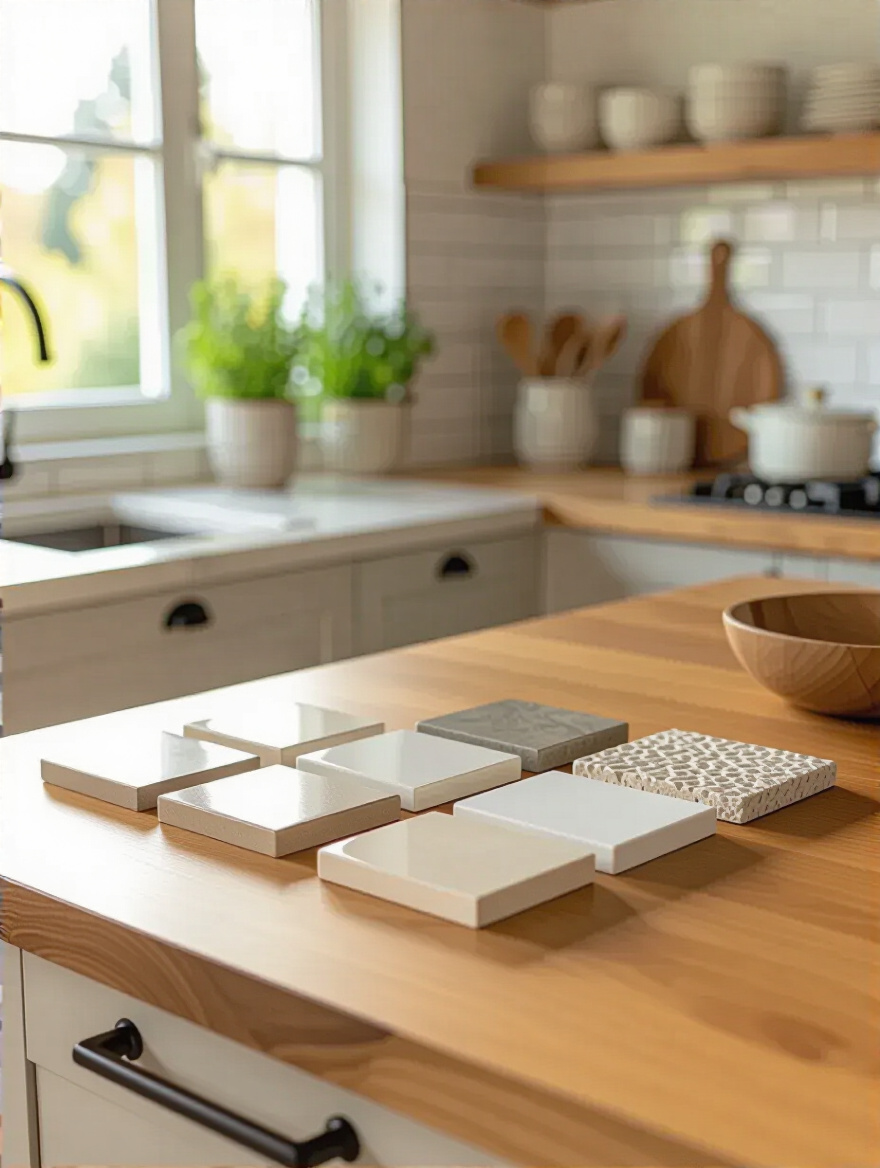
Forget trying to find a “deal” on something that looks like marble. Instead, embrace the beauty of a classic porcelain or ceramic tile within your budget. These are honest, hard-working materials that have graced Scandinavian kitchens for generations. Your budget can guide you to creative solutions. A clear financial plan helps you value what you choose, ensuring you invest in quality that will endure, not just a fleeting look.
Think about how you move and work in your kitchen. Where do you chop your vegetables? Where does the water splash from the sink, or the oil from the pan? Your backsplash is first and foremost a functional surface. Its primary job is to protect your walls. Let its function define its form. For a simple kitchen, the standard height between the counter and cabinets may be enough.
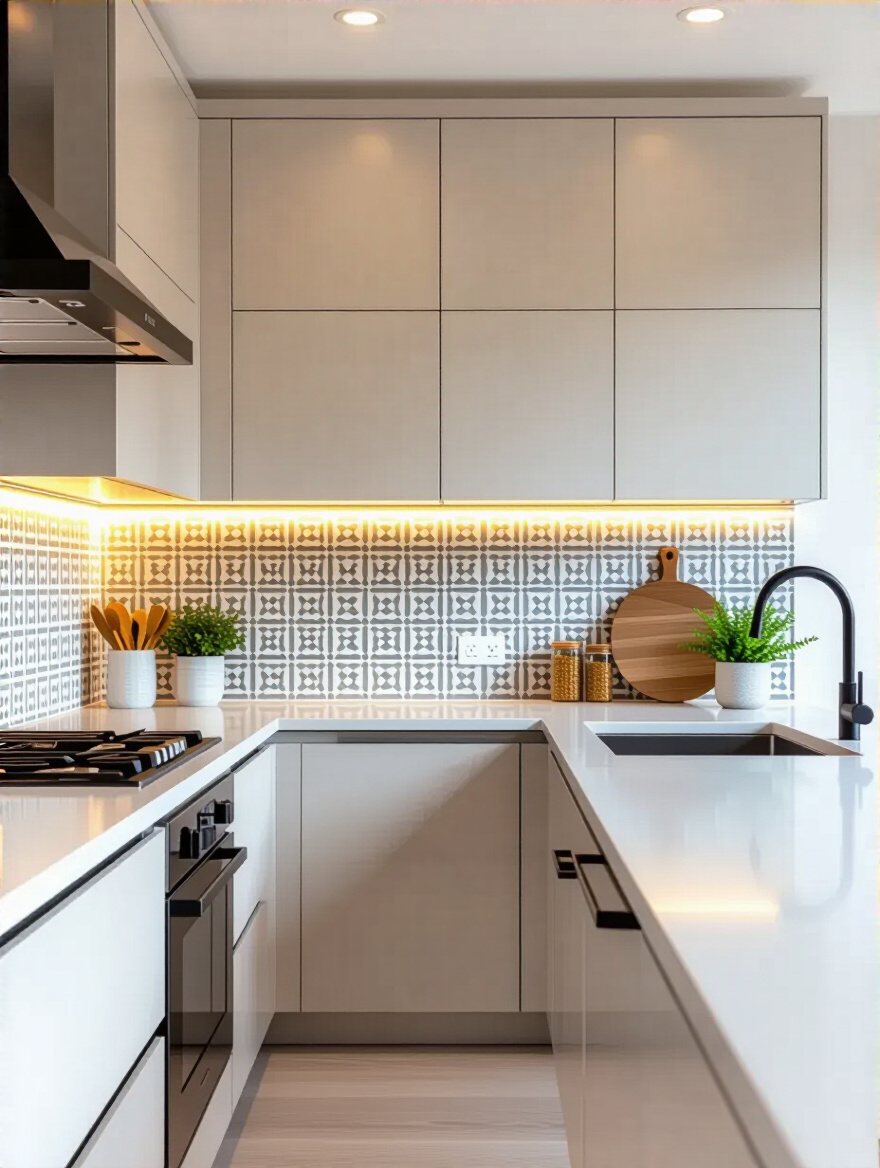
But perhaps you have a powerful gas range. It makes sense, then, to extend the backsplash all the way to the vent hood, creating a durable, wipeable surface right where you need it most. Or maybe you have open shelves instead of upper cabinets. Extending the backsplash up the entire wall creates a beautiful, unified statement. Let the needs of the space guide your hand, and the result will feel both intentional and effortless.
Be honest with yourself. Are you a messy cook? Do you have small children? The answers should guide your material choices more than any design magazine. A backsplash in a busy family kitchen must be able to withstand anything and be cleaned with a simple wipe. This is why materials like large-format porcelain, back-painted glass, or even stainless steel are so beautiful in their simplicity—they are nearly indestructible.
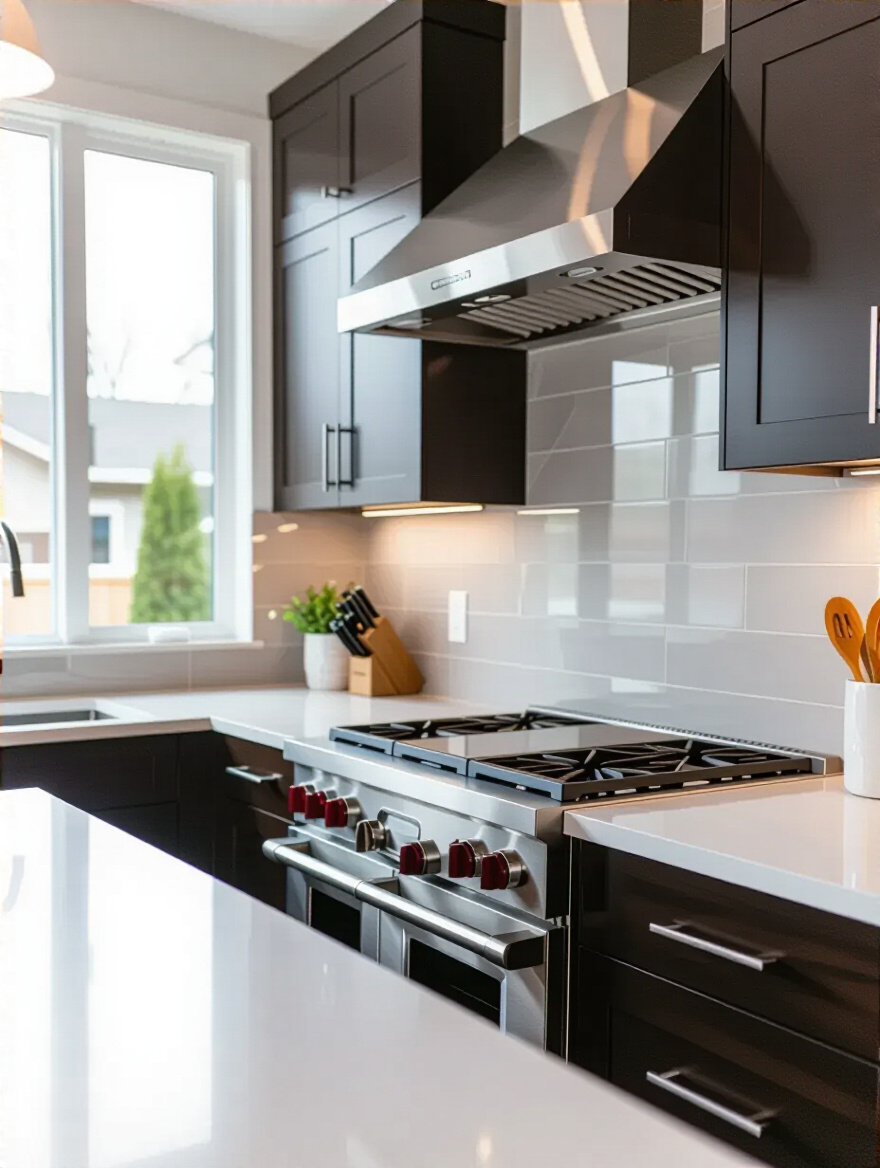
Porous, unsealed stone or tiny mosaic tiles with countless grout lines may look stunning in a photo, but living with them can become a chore. True luxury is not about precious materials you have to tiptoe around; it’s about having a home that serves you and makes your life easier. Choose a material that will forgive a splash of tomato sauce and still look beautiful tomorrow. That is the essence of functional design.
With this clear understanding of your needs, we can move from the abstract to the concrete. Now we can begin to consider the long-term life of your kitchen and ensure the choices we make today will still feel right in ten or twenty years.
A home is not static; it evolves with you. The decisions we make for our kitchen today should be made with a thought for tomorrow. This part of the planning is about laying a groundwork of quality and timelessness, ensuring your backsplash becomes a lasting feature, not a temporary fix that needs to be torn out with the next renovation.
In Scandinavia, there is a deep respect for craftsmanship and materials. Wasting tile because of poor planning is seen as disrespectful to the resources and the maker. Measuring carefully is not just a technical step; it’s an act of mindfulness. Measure your space twice, even three times. Draw it out on paper. Account for every outlet, every corner, and every switch.
This practice forces you to slow down and truly consider the space. You’ll notice the slight curve in the wall or the unlevel countertop you might have otherwise missed. A thoughtful layout with precise measurements leads to a calm, ordered installation, with clean lines and minimal waste. This is the quiet foundation of quality that you can feel, even if you can’t see it.
It is almost certain that your taste in cabinet color or hardware will change over the next decade. The mistake is to choose a backsplash so specific and loud that it locks you into one particular style. A classic, neutral backsplash—think subway tile, a soft-hued ceramic, or a natural stone with subtle veining—acts as a steadfast anchor for the room.
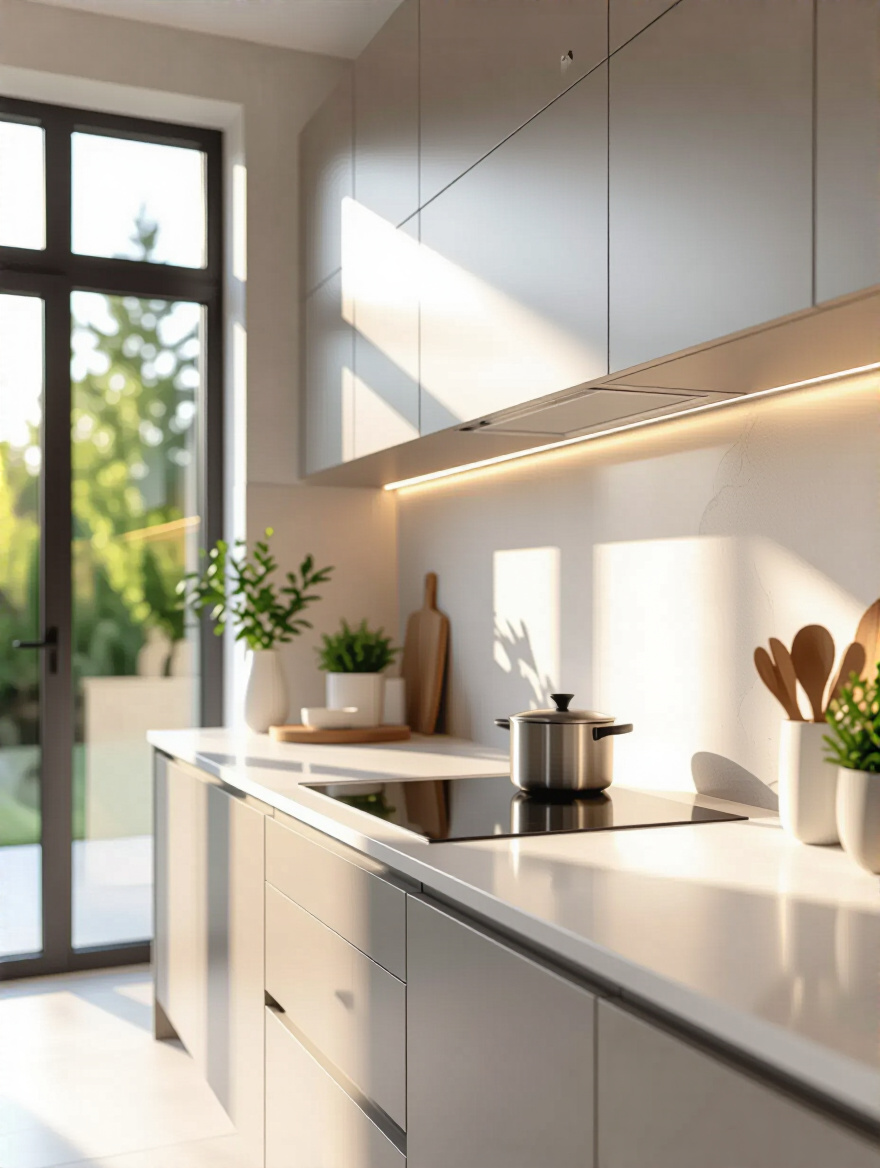
Think of it as the perfect pair of jeans. It can be dressed up or down, and it goes with everything. A client once fell in love with a bold, geometric-patterned tile. I asked her to imagine it in five years with different colored cabinets. She realized it would clash. We chose a simple, textured white tile instead. Years later, she painted her cabinets from white to a deep fjord blue, and the backsplash still looked perfect. That is the power of timeless design.
Now that our foundation is set with purpose and foresight, we can finally talk about materials. This is the exciting part, where we choose the very soul of the surface that will become the backdrop to your kitchen life.
The material you choose for your backsplash has a character—a voice. Some materials are quiet and humble, others are ancient and full of stories. Your choice will set the emotional tone for the entire kitchen. Let’s explore some options not just for how they look, but for how they feel.
There is a reason these materials are timeless. They are honest, hard-working, and beautiful in their simplicity. Ceramic offers a handmade warmth, with slight variations in glaze and form that feel authentic and human. Porcelain is its tougher sibling, incredibly dense and durable, perfect for a hard-working kitchen. And the subway tile? It is the ultimate quiet classic. Its simple geometry provides order and calm.
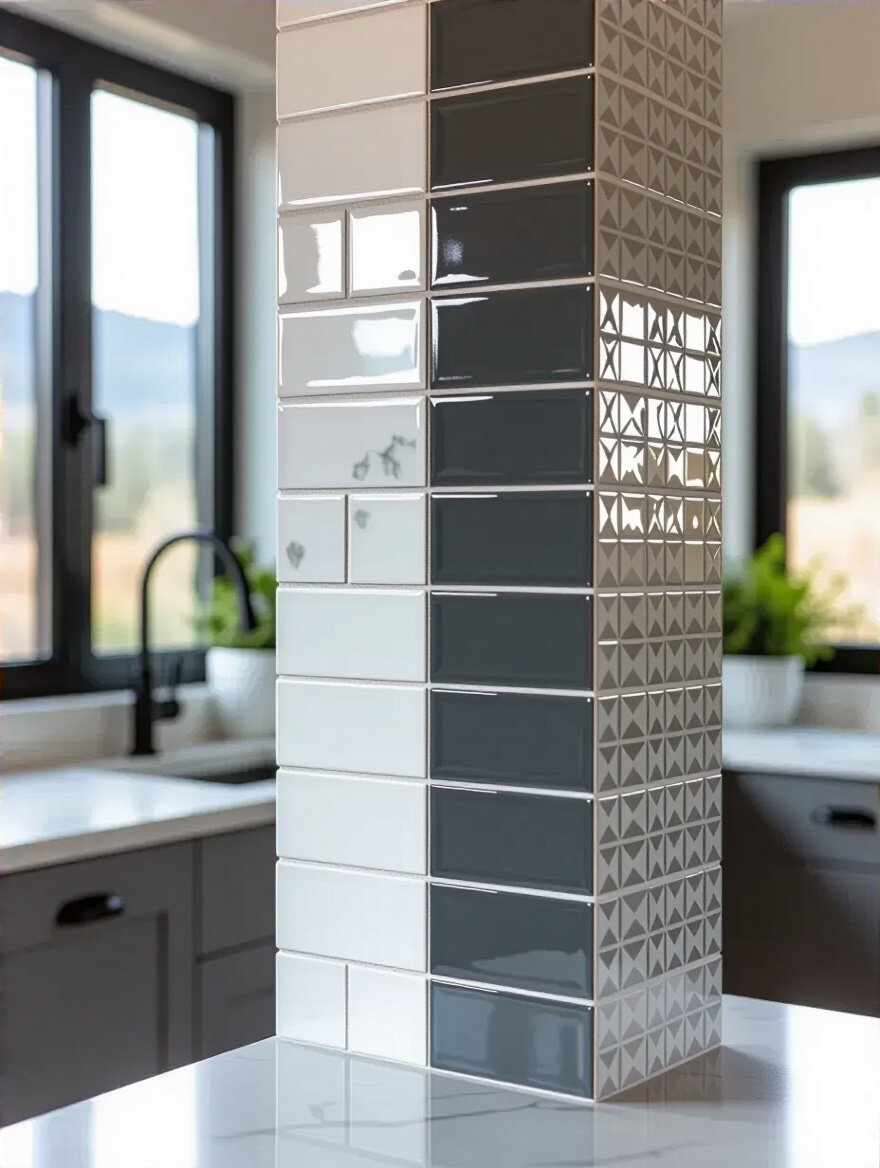
These materials are not trying to be something they’re not. They are humble, and in that humility lies their elegance. You can lay them in different patterns for subtle texture or choose a unique glaze for a touch of personality, but at their core, they provide a clean, reliable canvas.
“The beauty of a simple ceramic tile is that it doesn’t demand attention. It creates a feeling of peace, a quiet backdrop that allows the life in the room to be the focus.”
To bring stone into your kitchen is to bring in the story of the earth. Each piece of marble, granite, or slate is unique, with veins and patterns formed over millennia. This is the opposite of a mass-produced product; it is a connection to nature. Stone adds a depth and organic quality that cannot be replicated. A simple slab of stone behind the range can feel like a piece of art.
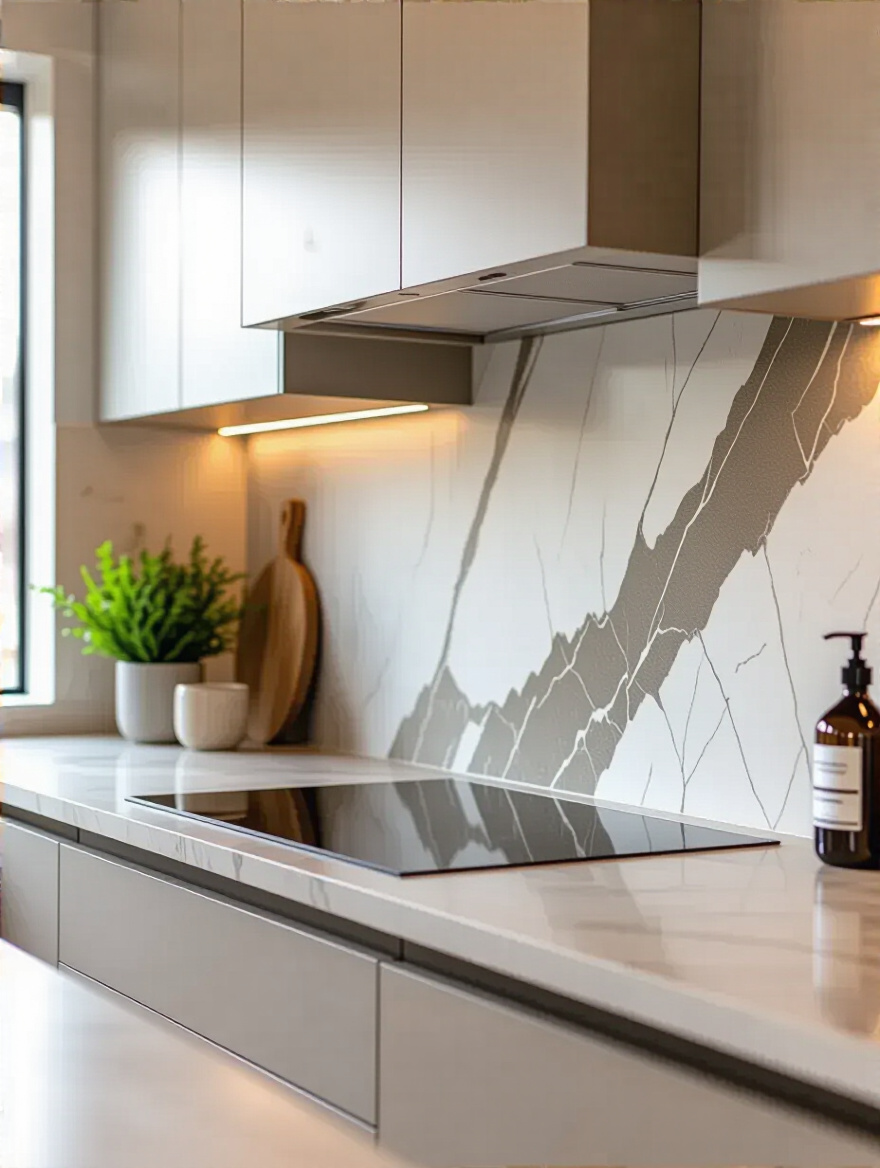
Of course, this connection to nature comes with responsibility. Most stones are porous and require sealing to protect them from the rigors of the kitchen. This maintenance is a small ritual, a way of caring for a natural element you’ve invited into your home. If you are willing to care for it, stone will reward you with enduring beauty that deepens over time.
In the Nordic countries, light is precious. We design our homes to capture and reflect as much of it as possible. This is where materials like glass, stainless steel, or even a subtly antiqued mirror can be powerful tools. A back-painted glass backsplash provides a seamless, monolithic plane of color that reflects light beautifully and is incredibly easy to clean.
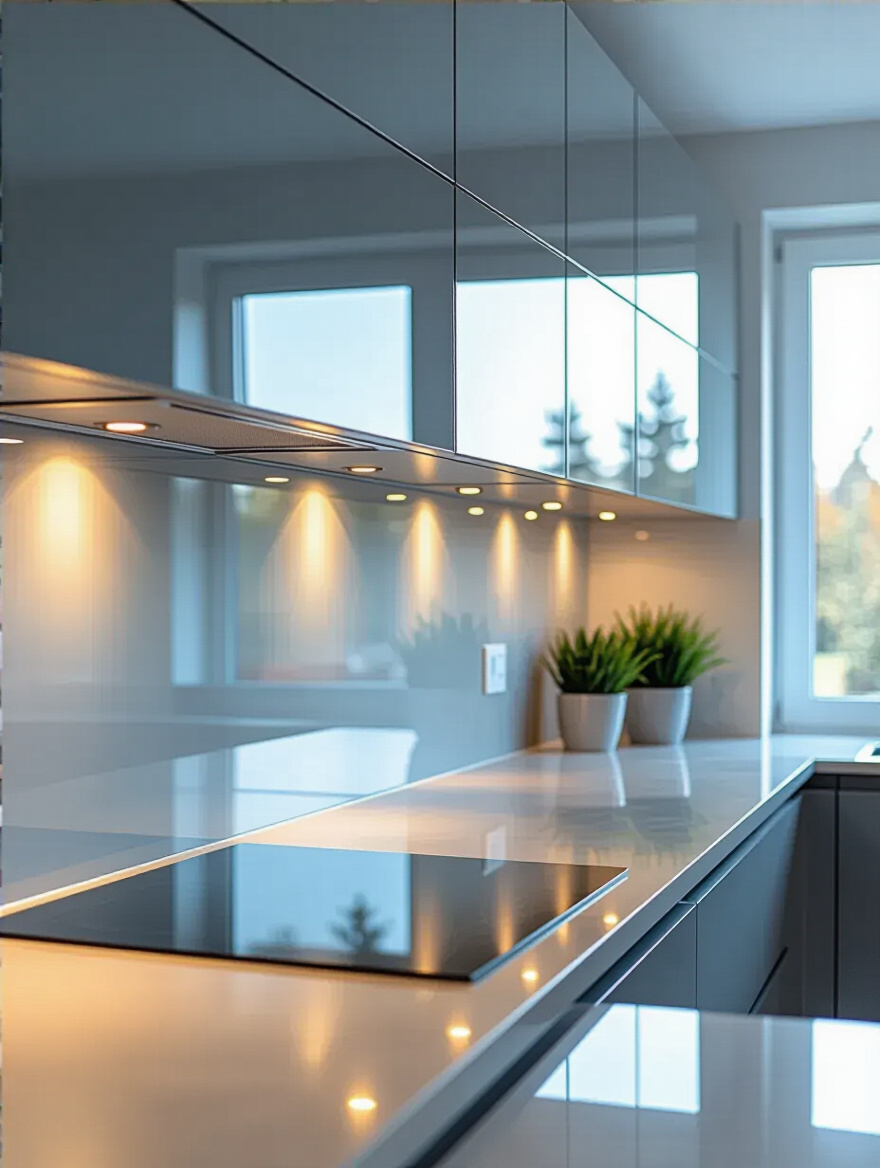
Stainless steel brings a functional, almost professional quality, bouncing light around in a diffuse, soft way. It’s honest about what it is: a surface for work. These materials bring a clean, modern feel to the kitchen. They are less about texture and more about the play of light, creating a bright and airy atmosphere that can make a small kitchen feel much larger.
Grout is the space between—the quiet pause that creates rhythm. Too often it’s an afterthought, but your grout choice will completely change the character of your tile. A contrasting grout, like a dark grey with white subway tile, creates a graphic, defined pattern that emphasizes the grid. A matching grout, however, allows the tiles to blend into a single, textured surface.
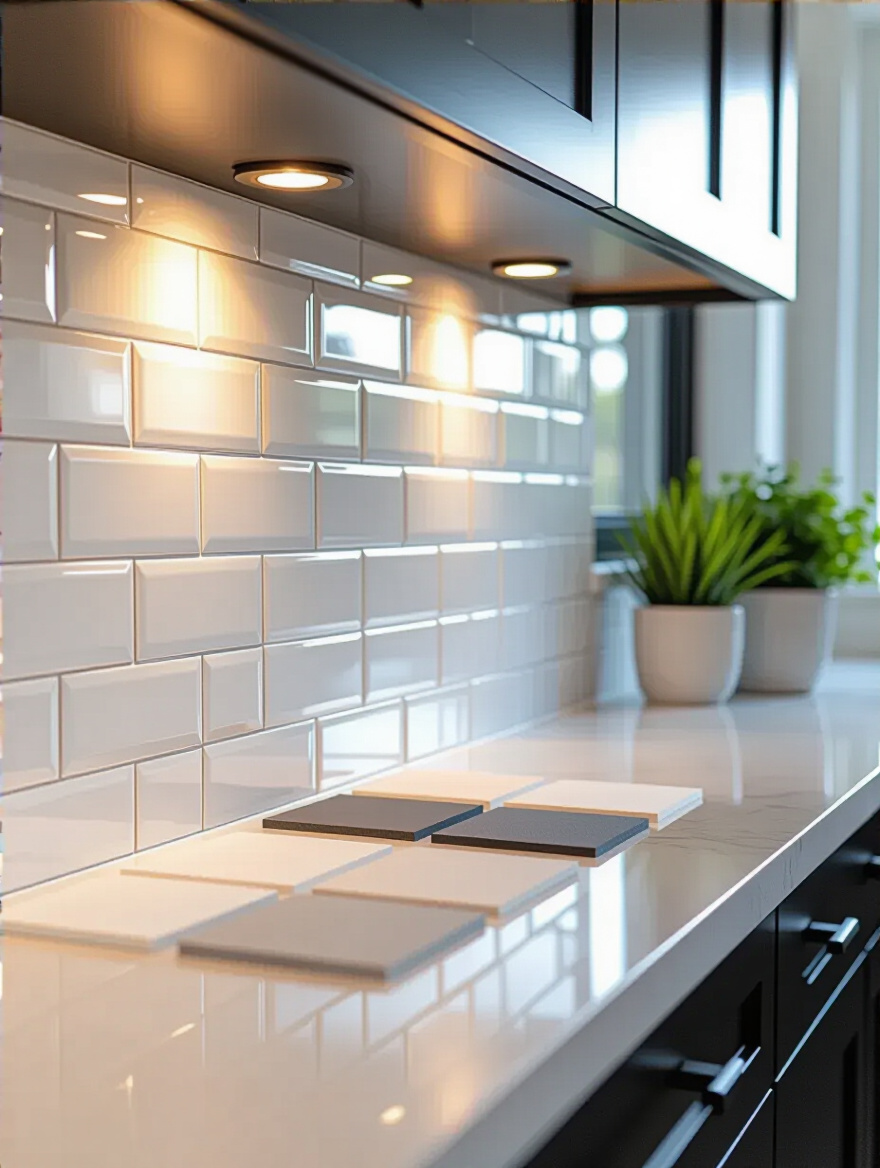
I almost always recommend a grout color that matches the tile or is just a shade darker. This creates a softer, more monolithic look that is calming to the eye. Functionally, a high-quality epoxy grout is worth the investment. It resists stains and moisture, which means your grout will look clean and fresh for years, reducing the amount of maintenance required.
Choosing the right material is only half the journey. The other half is ensuring it is installed with care and respect. A perfect installation is a quiet testament to quality that elevates the entire project.
We’ve chosen our materials with intention. Now, we must honor them through the process of installation. This stage is about craftsmanship, whether it’s your own or that of a professional you trust. A beautiful material poorly installed will always look cheap, while a simple material installed with precision will always look elegant.
The most important part of your backsplash is the part you will never see. The preparation of the wall is everything. A clean, smooth, and level surface is essential for the tiles to adhere properly and lie flat. Taking the time to patch holes, sand down bumps, and prime the wall is a non-negotiable step.
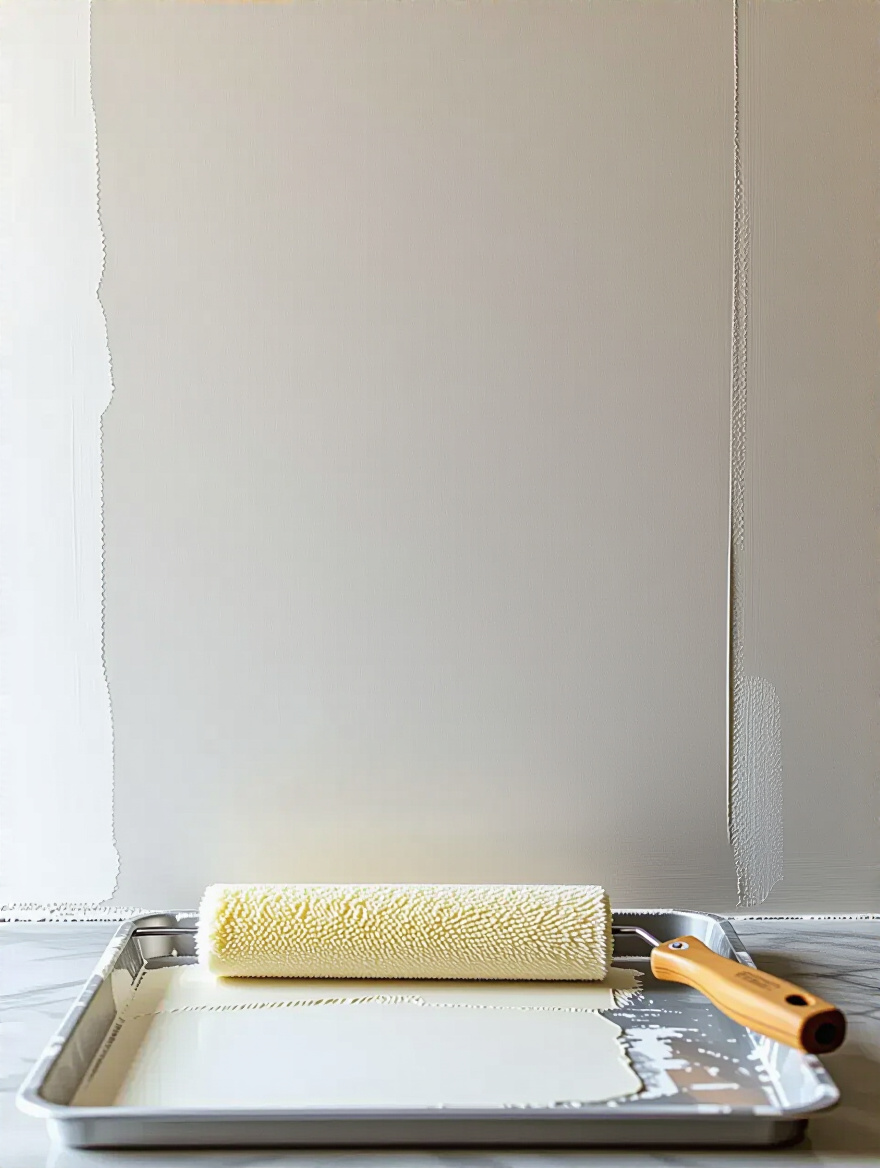
Think of it like preparing a canvas for a painting. Without a good canvas, the paint will crack and flake. The same is true for tile. A poorly prepared wall will eventually cause tiles to loosen or grout to crack. This foundational work is a quiet act of quality that ensures your backsplash will be a permanent and stable part of your home for decades to come.
There can be a deep satisfaction in building something with your own hands. If you are patient, meticulous, and enjoy the process, installing your own backsplash can be a rewarding project. However, it requires an honest assessment of your skills and your time. A rushed or inexperienced installation will be a constant, visible reminder of its imperfections.
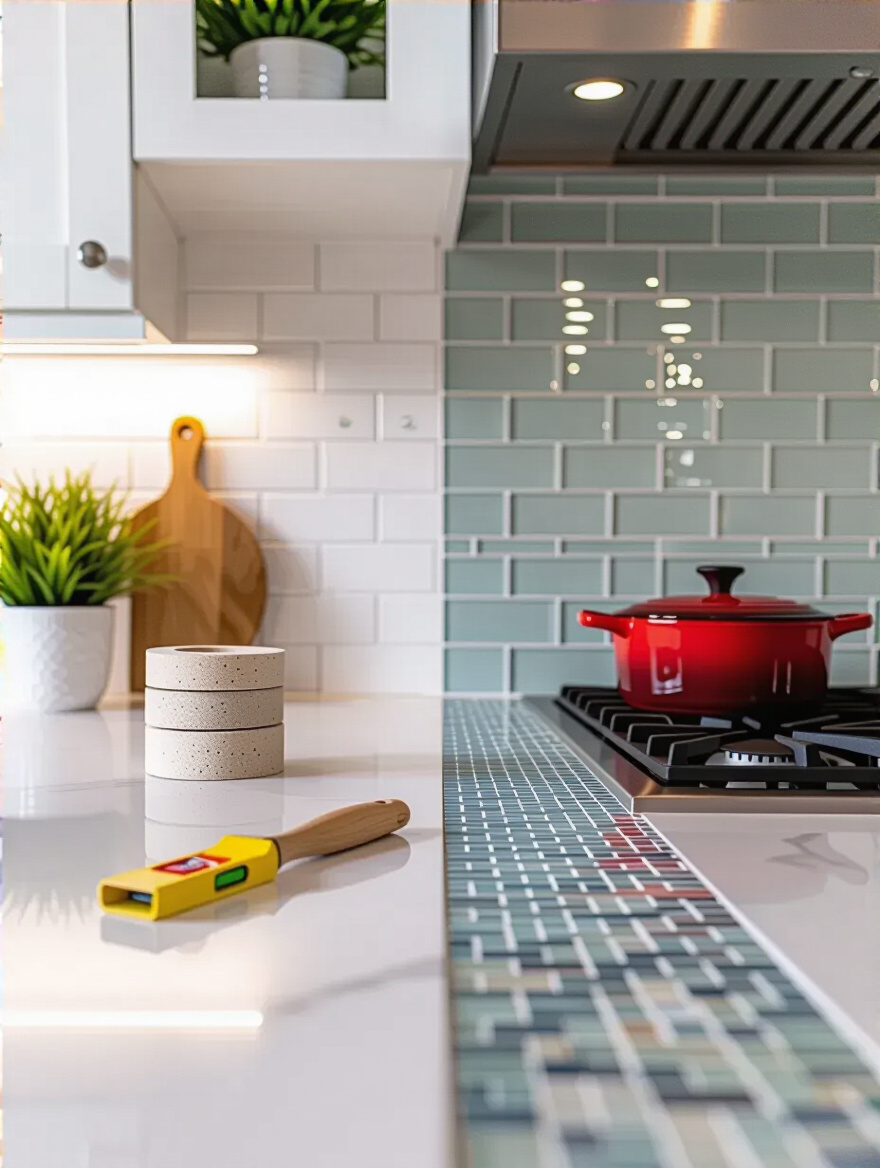
There is no shame in knowing your limits. Hiring a professional is not an admission of failure; it’s an investment in a flawless result. A skilled tile setter works with an efficiency and precision that comes from years of experience. For complex patterns or expensive materials like natural stone, a professional is almost always the wisest choice. Respect the craft, and the final result will honor your home.
With the fundamentals of materials and installation in place, we can now add layers of light and form that will bring the entire kitchen into harmonious balance.
This is where we refine the design. With the foundational choices made, we can now think about the subtleties that create a feeling of warmth, comfort, and cohesion. These are the elements that transform a well-designed kitchen into a truly inviting space you love to be in.
True harmony is achieved not by matching colors, but by matching undertones. Hold a sample of your backsplash material next to your countertop. Do they speak the same language? A countertop with a warm, creamy undertone will feel more at home with a backsplash that shares that warmth. A cool, blue-gray cabinet will harmonize with a backsplash that has similar cool tones.
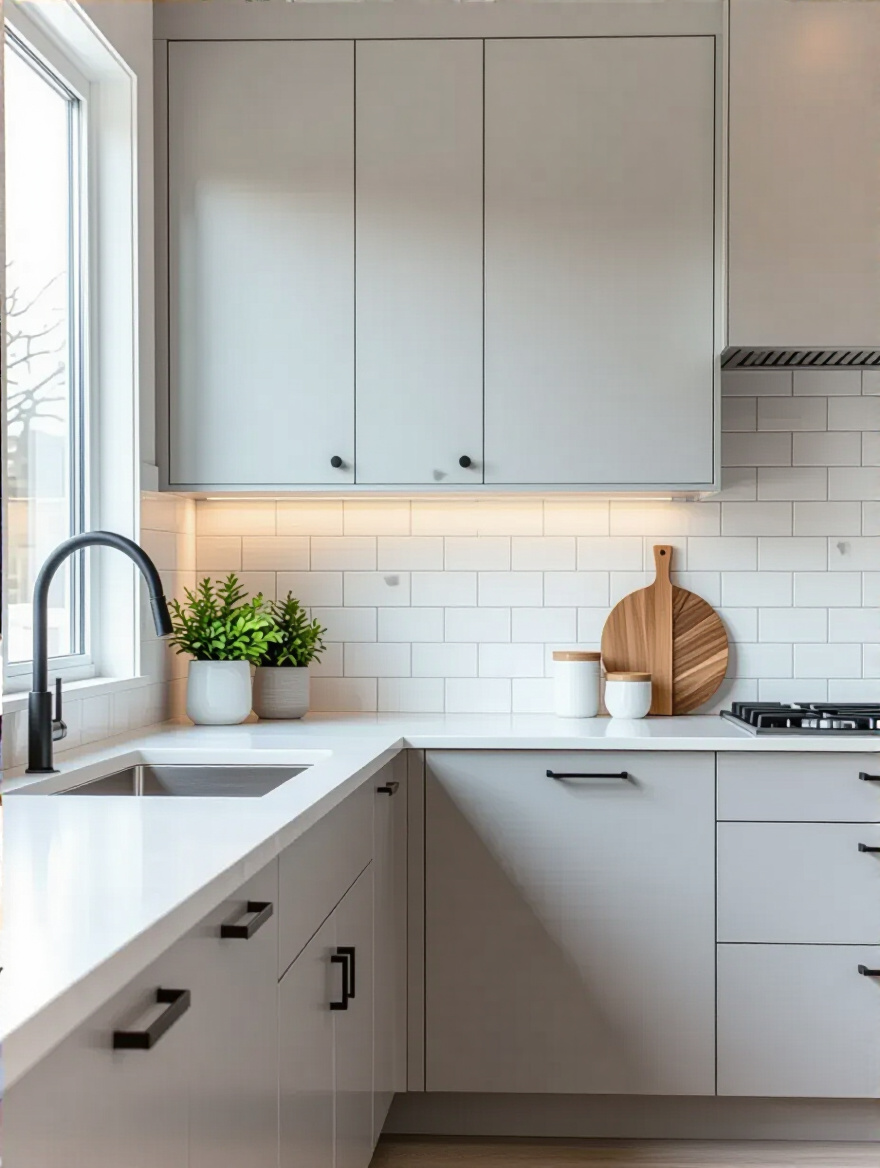
This subtle alignment creates a visual calm that is deeply restful. Your eye travels smoothly from one surface to the next without being jarred by a clash of temperatures. This creates a space that feels whole and intentional, where every element belongs.
Minimalism does not mean cold or boring. Warm minimalism is rich with texture. Since our color palette is often restrained, texture does the work of creating visual interest. This can be as simple as choosing a tile with a handmade quality, where the surface is slightly uneven and the glaze has depth. Or it could be a fluted tile, which creates a beautiful play of light and shadow.
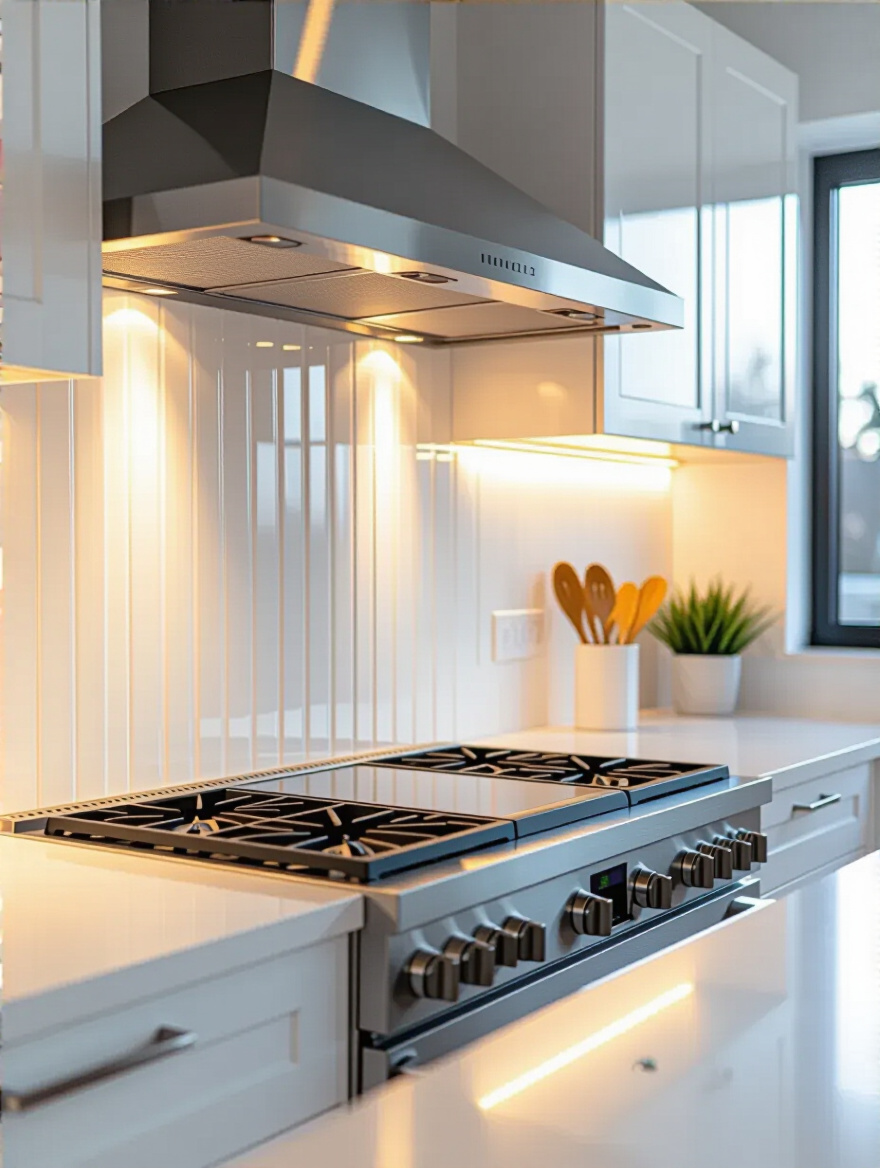
This tactile quality is essential for hygge, the Danish concept of coziness and contentment. A textured surface invites touch and makes a space feel more human and grounded. It catches the light in interesting ways throughout the day, adding a subtle, dynamic quality to the room.
Lighting is not an accessory; it is a building material. In the kitchen, under-cabinet lighting is essential. It serves a practical purpose, illuminating your work surface for tasks like chopping. But it also has a powerful aesthetic role. It washes light down the face of your backsplash, a technique called “grazing.”
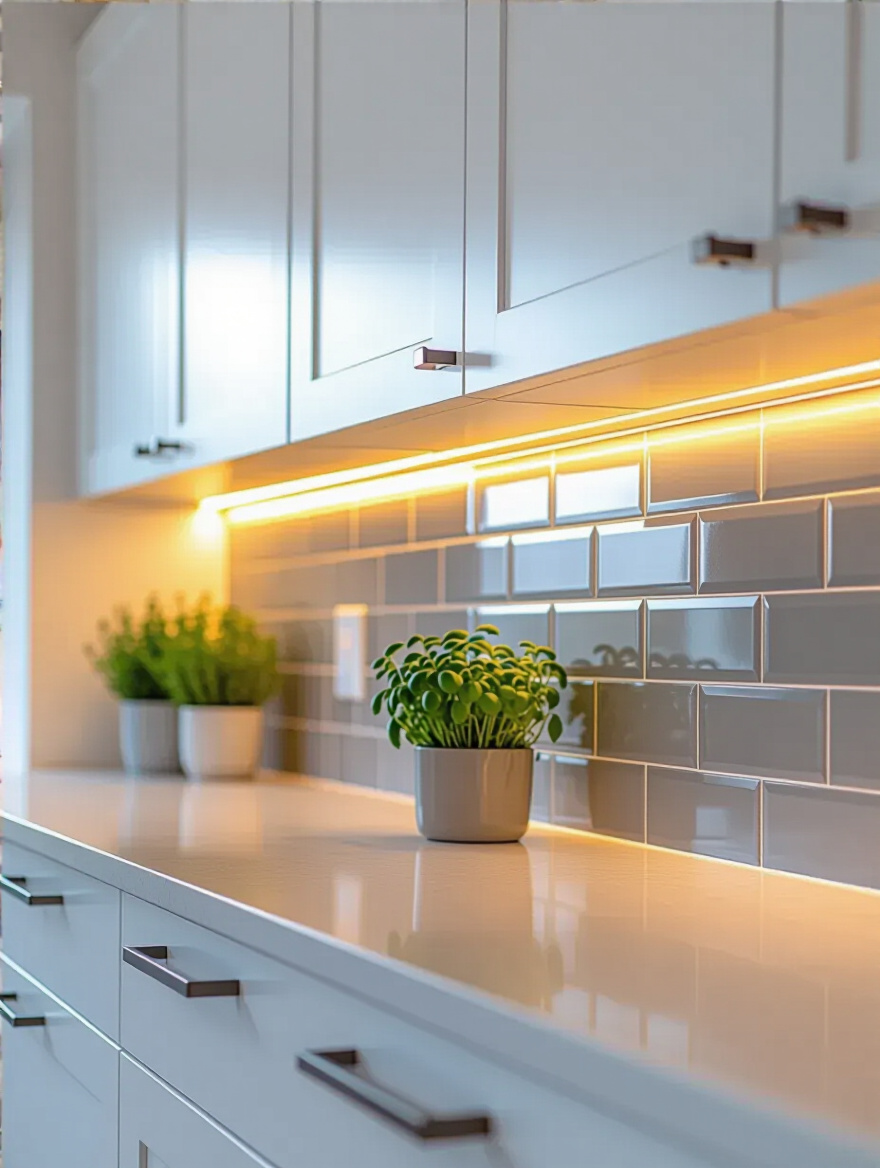
This grazing light will pick up every bit of texture and detail in your backsplash material, making it come alive. A smooth, glossy tile will gleam, while a textured, matte tile will reveal subtle shadows and depth. At night, with the main overhead lights off, this soft glow can create a warm, inviting ambiance that turns the kitchen into a cozy hub of the home.
Pattern should be used with intention. In a minimalist space, a pattern can provide visual movement without introducing a jarring new color. A herringbone or chevron pattern, laid with a simple subway tile, adds a sophisticated layer of texture and rhythm. The pattern itself becomes the feature, not the color of the tile.
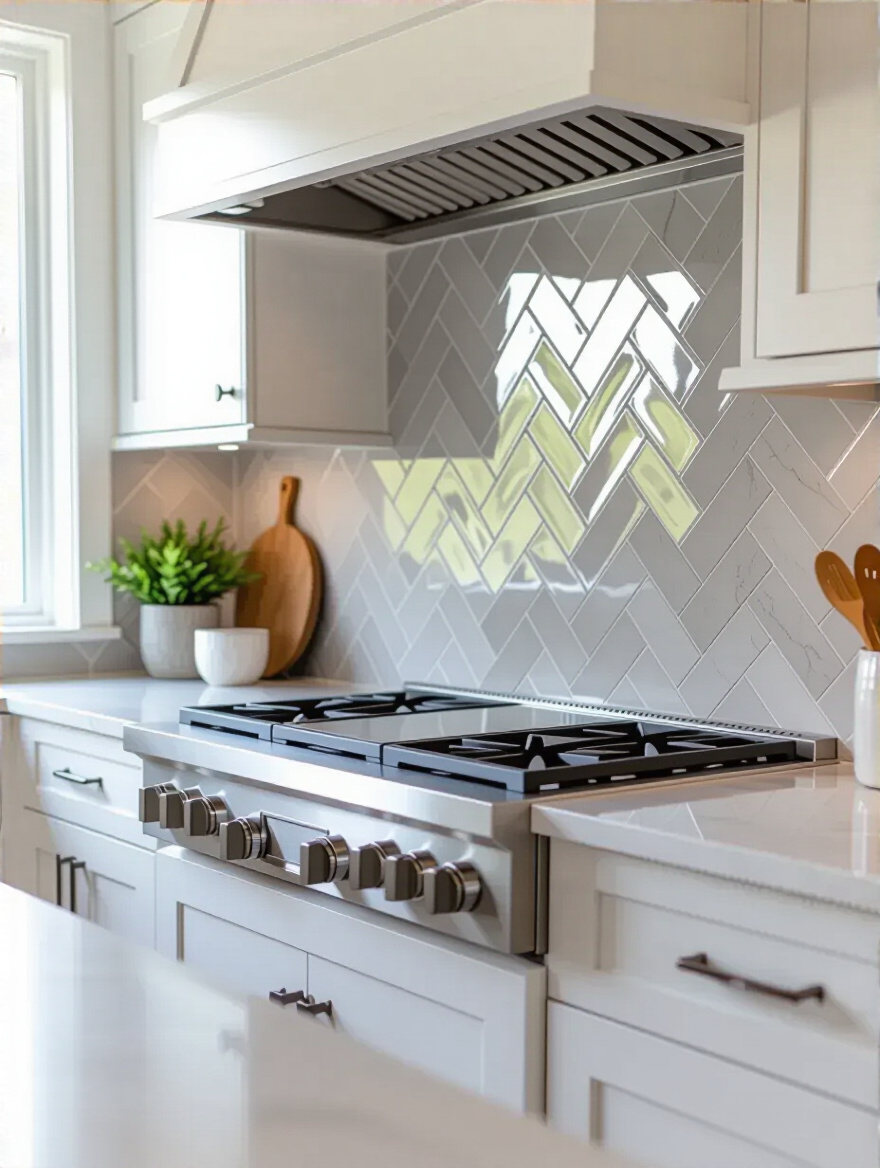
The key is to keep it subtle. A white-on-white herringbone pattern provides a rich texture that you notice slowly, rather than a bold design that shouts for attention. It adds a touch of classic elegance and gentle energy to the wall, preventing the space from feeling static.
Now let’s consider how we can use the backsplash to shape the very architecture of the room, turning a simple surface into a powerful design element that enhances the feeling of space and focus.
Here, we push the boundaries of what a backsplash can be. We move beyond seeing it as a simple strip of material and begin to see it as an architectural surface. These approaches can create a profound sense of scale, unity, and custom detail within your kitchen.
This is one of my favorite techniques for making a kitchen feel larger and more cohesive. By running the backsplash material from the countertop all the way to the ceiling, you create a single, unbroken vertical plane. This draws the eye upward, giving the illusion of a higher ceiling and a more expansive space.
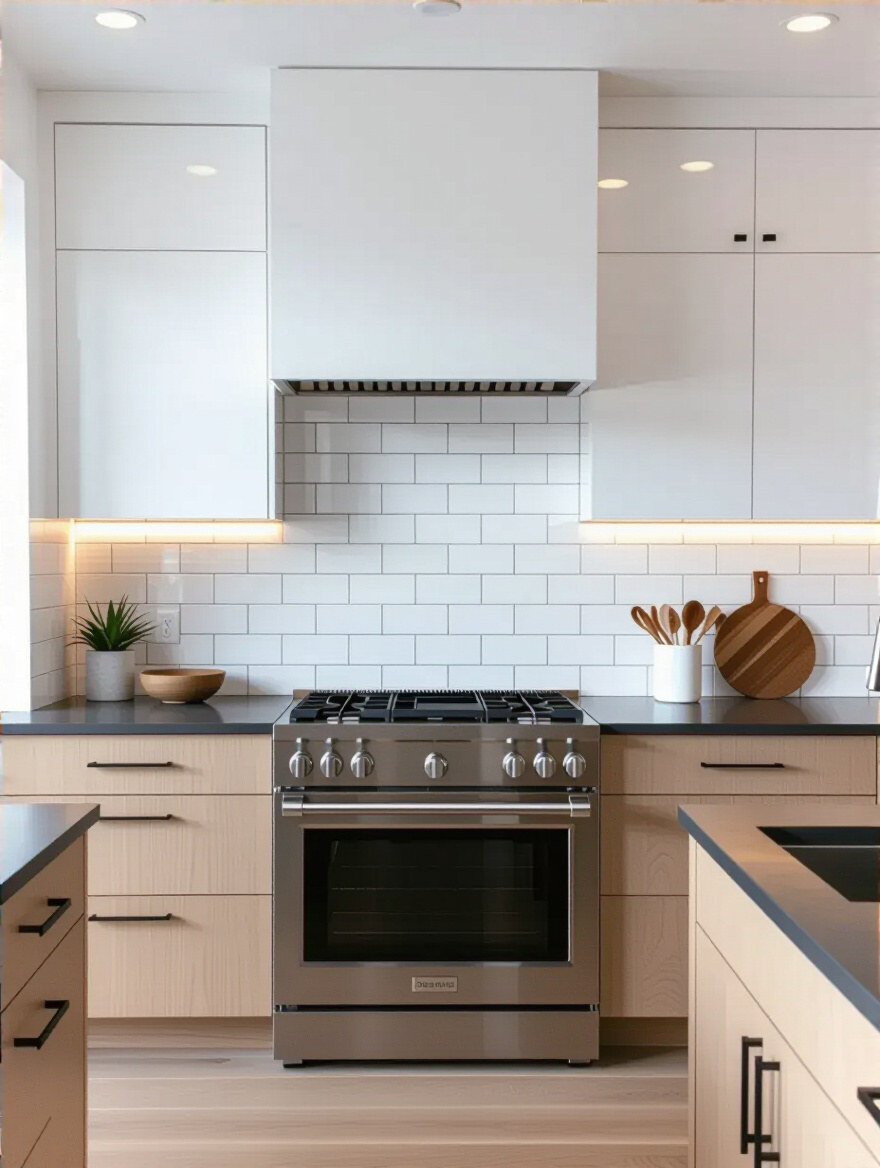
It turns the entire wall into a feature, rather than just the small space between your cabinets. This is particularly effective behind a stove where there is no upper cabinet or on a wall with open shelving. It creates a seamless, clean look that feels both luxurious and minimalist. Using a simple material like a stacked subway tile or a large-format slab works best to maintain a calm, uncluttered feeling.
In a quiet room, a whisper can be very powerful. A focal point in a Scandinavian kitchen isn’t about a loud, look-at-me design. It is a moment of special beauty and craftsmanship. Perhaps it’s a small section behind the range laid in a different pattern, or a single row of tile made by a local ceramic artist.
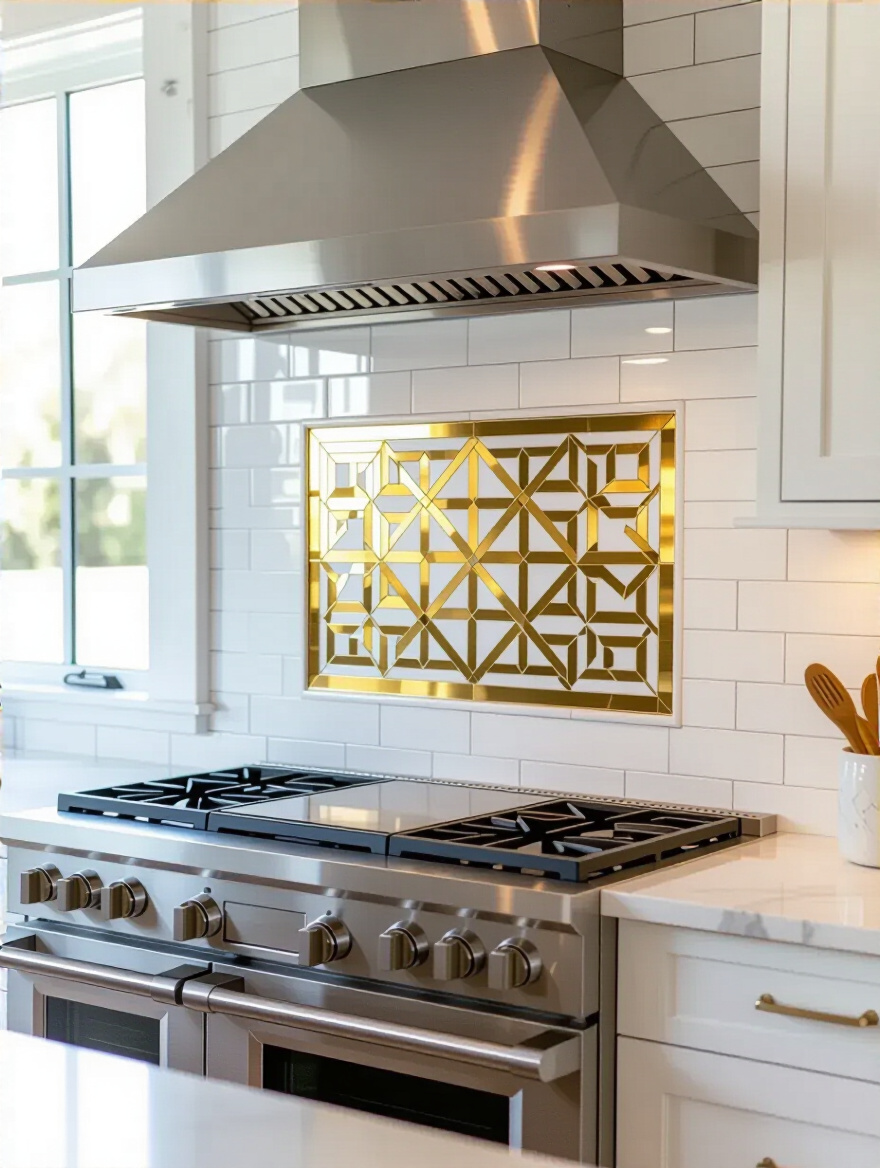
I once saw a kitchen where the backsplash was made of simple, affordable field tile, but behind the sink was a small inlay of beautiful, hand-painted tiles the owner had brought back from a trip. It was a personal story embedded in the wall. This kind of focal point adds soul and character. It’s a quiet detail that rewards closer inspection and makes the space uniquely yours.
A home is a living thing, and a truly great design is one that is easy to live with and care for over the long run. Let’s finish by discussing how to maintain the beauty of your choices.
The relationship with your kitchen doesn’t end when the renovation is complete. A well-designed space should be simple to care for. These final considerations are about ensuring your beautiful backsplash remains a source of joy, not a maintenance burden, for years to come.
This is a simple act of care that protects your investment. If you’ve chosen natural stone or a cement-based grout, it needs to be sealed. This invisible barrier prevents moisture and stains from penetrating the surface, keeping it looking pristine. Think of it as protecting a beautiful wooden table with a coat of wax.
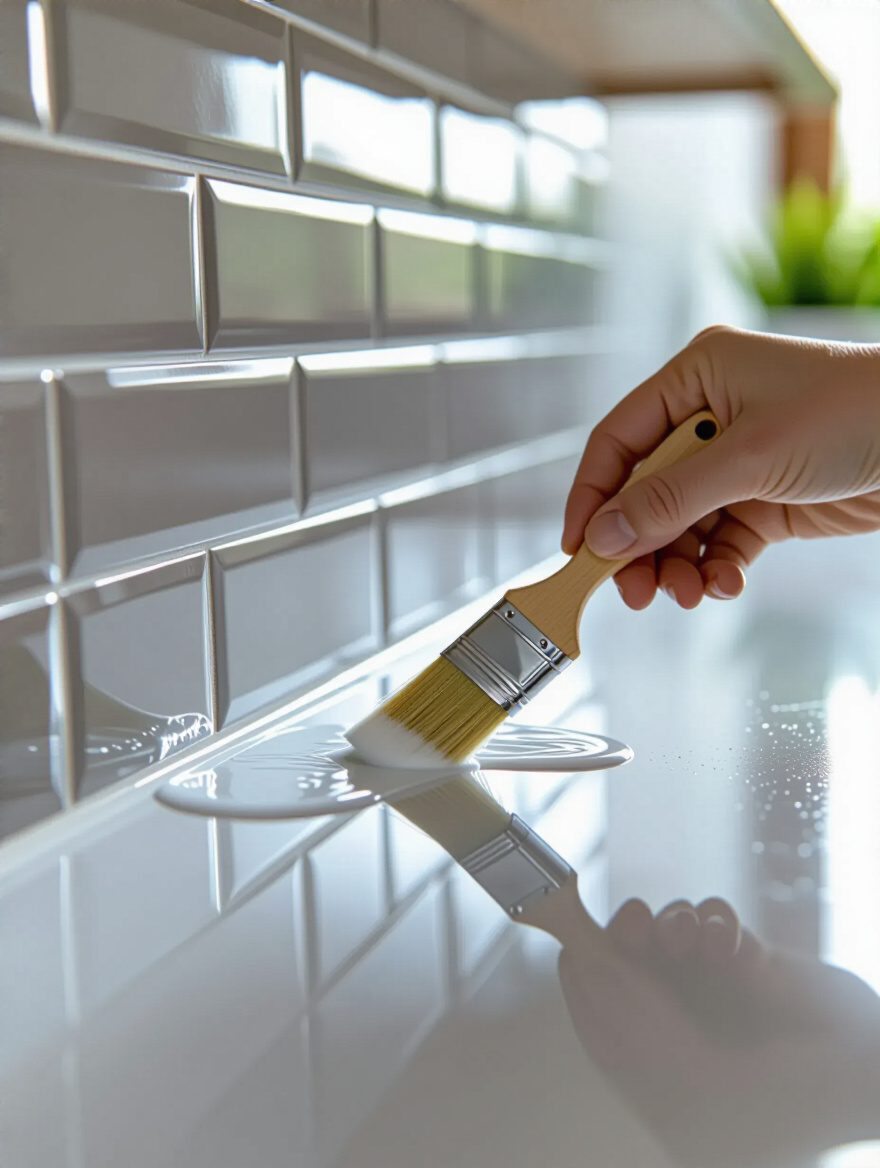
Resealing is a small task that only needs to be done every year or two, but it makes a world of difference. It keeps grout from discoloring and makes daily cleaning effortless. This simple bit of maintenance is a way of showing respect for the materials and ensuring their longevity.
The best designs are the easiest to maintain. Your cleaning routine shouldn’t require harsh chemicals or intense scrubbing. A simple wipe-down with a soft cloth and a gentle, pH-neutral cleaner after cooking is all that a good backsplash should need.
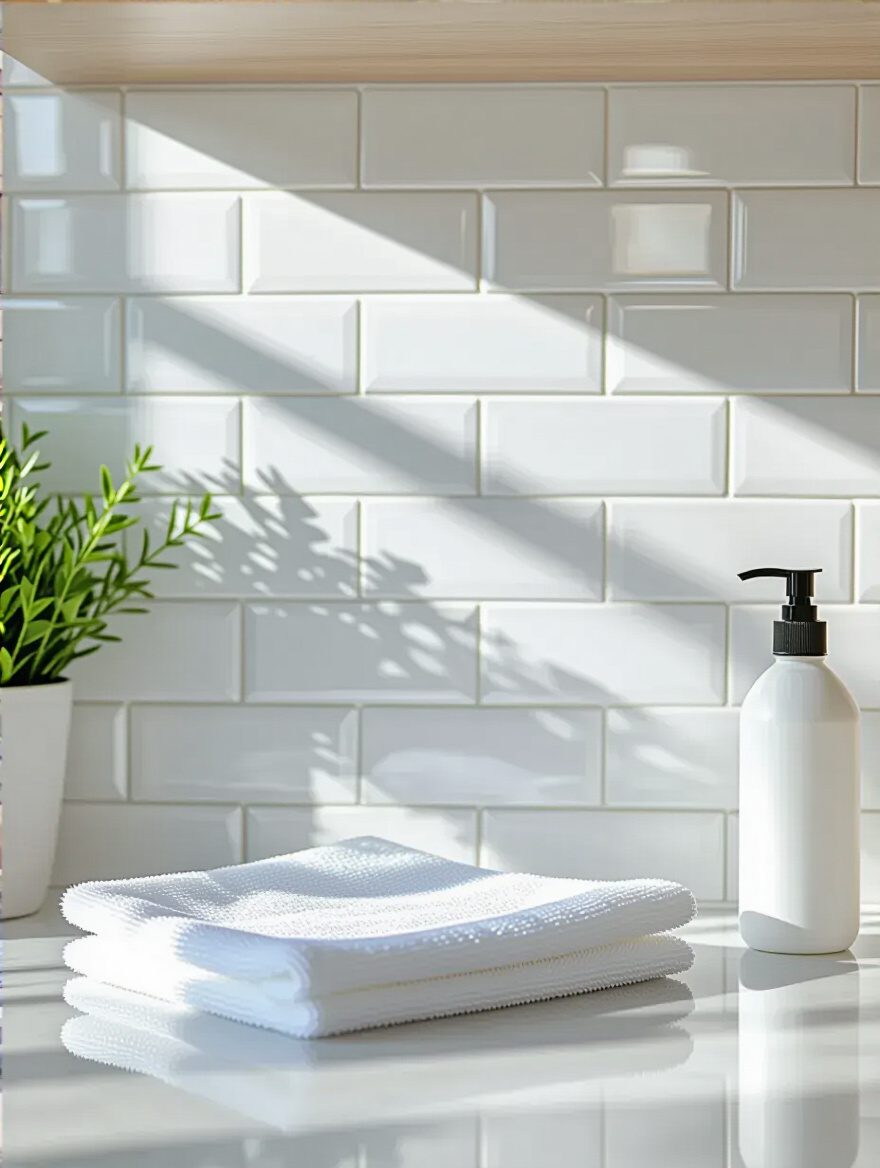
The key is consistency. By wiping up splashes as they happen, you prevent them from setting in. This gentle, daily care is far better for the materials than an aggressive deep clean once a month. It becomes a simple, mindful ritual at the end of making a meal, leaving your kitchen calm and ready for the next day.
Let’s summarize the quiet mistakes. Don’t choose a trend over a classic. Don’t let your backsplash compete with your countertops. Don’t forget to prepare your wall properly. Don’t underestimate the impact of your grout color. And please, don’t choose a material that your lifestyle cannot support.
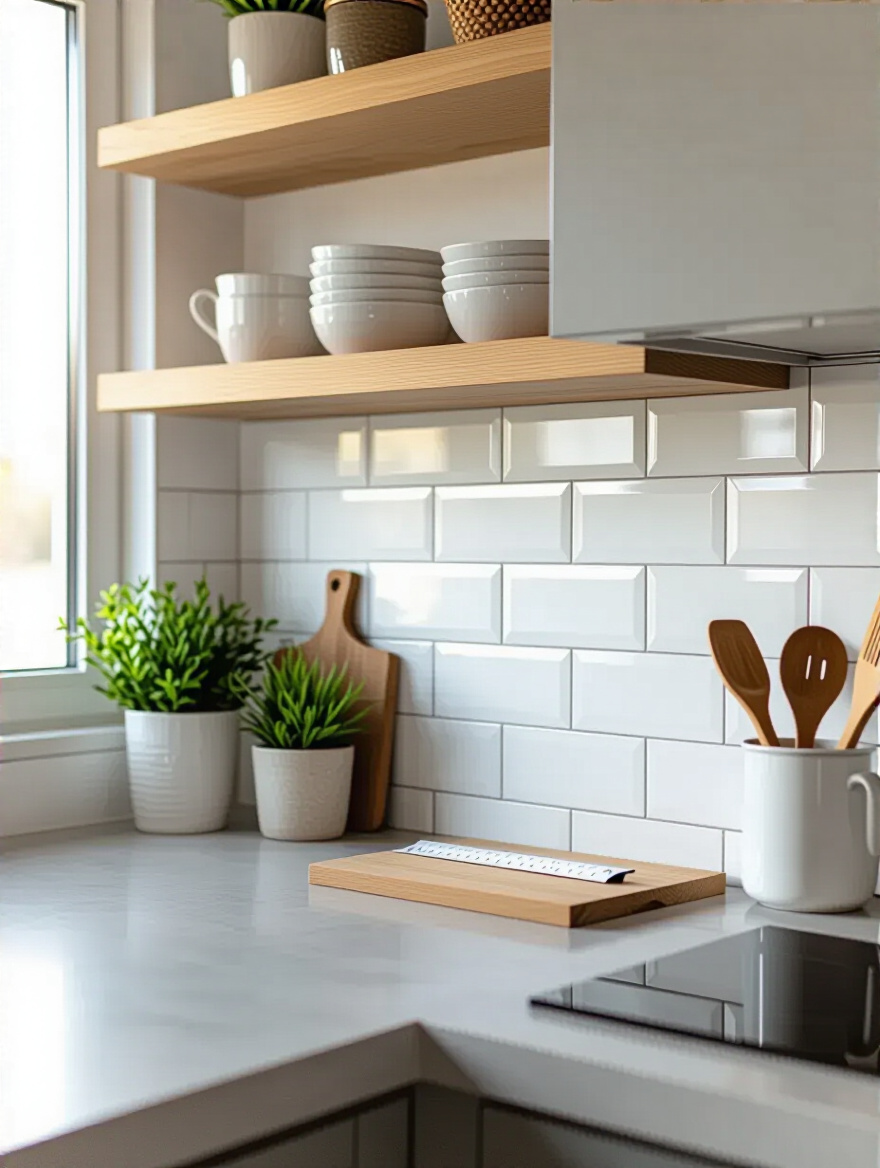
The best way to avoid these blunders is to slow down. Live with samples in your space for a few days. See how they look in the morning light and under your kitchen lights at night. Make a choice that feels right not just today, but a choice you can see yourself loving for many years. True beauty is timeless.
Replacing bulky upper cabinets with open shelving is a wonderful way to create a feeling of openness and light. It also allows your backsplash to become a more prominent feature, providing a beautiful backdrop for your favorite ceramics, glassware, or a few cookbooks.
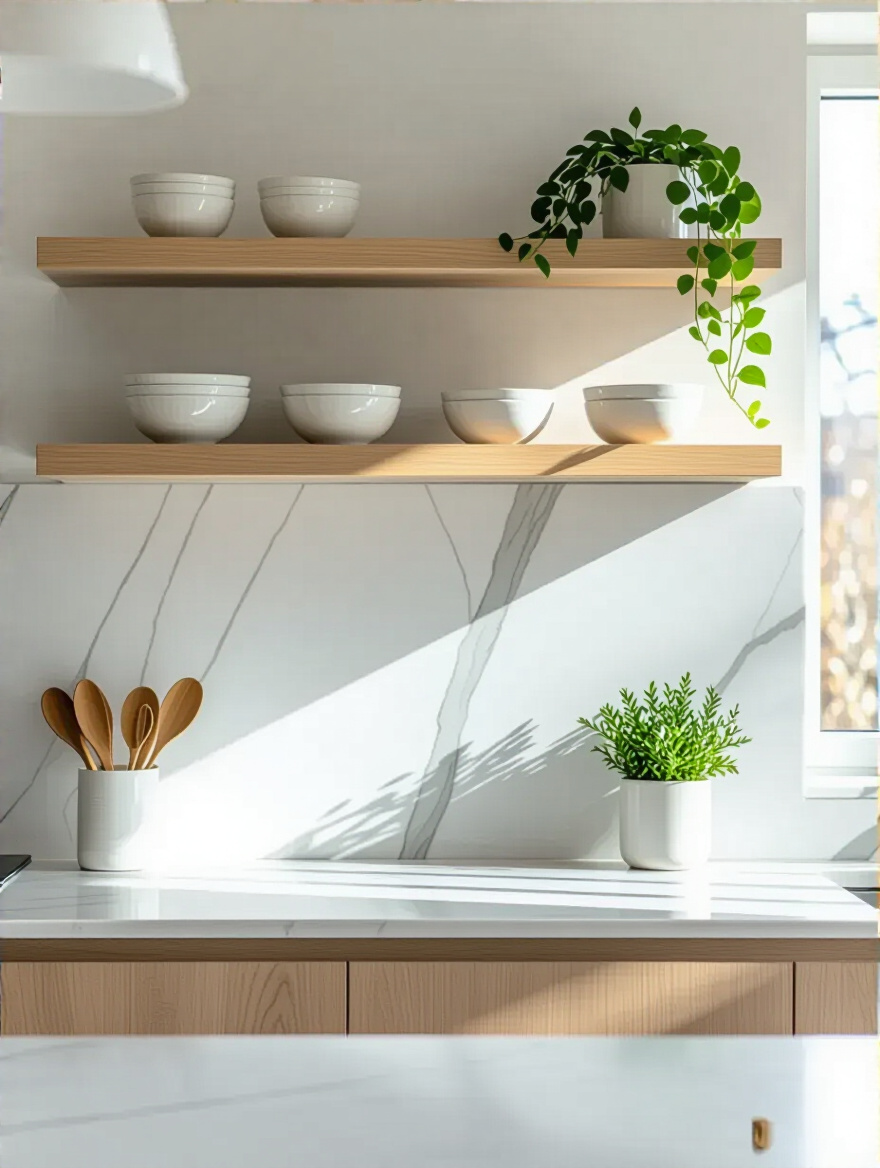
This look encourages a minimalist mindset. You can only display what is beautiful or useful, forcing you to be intentional about what you own. The combination of a simple, elegant backsplash and thoughtfully curated shelves creates a look that feels personal, airy, and deeply connected to the way you live.
Finally, let’s touch upon one last, but deeply important, principle: the connection our homes have to the world outside their walls.
A home should be a sanctuary, not just for us, but in harmony with the world around us. A truly thoughtful design considers its impact, choosing materials that are not only beautiful and durable but also kind to the planet. This final thought is about creating a kitchen with a conscience.
There are so many beautiful materials that are made with sustainability in mind. Tiles made from recycled glass have a unique depth and luminescence. Bamboo, a rapidly renewable resource, can be used for panels that bring an incredible warmth to a space. Even cork, harvested from the bark of the tree without harming it, makes a wonderfully warm and sound-absorbing backsplash.
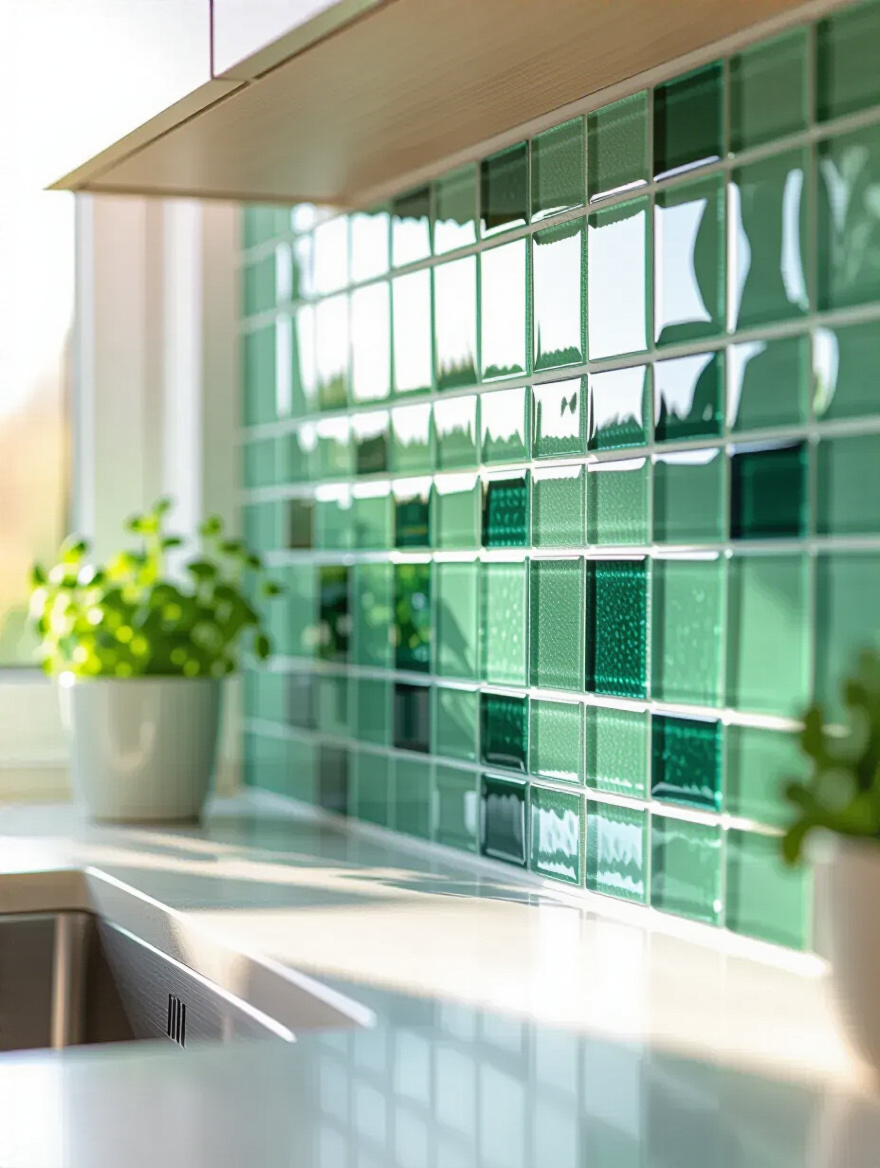
Choosing these materials is a vote for a healthier planet and a healthier home. They often contain no or low VOCs (volatile organic compounds), which means better air quality for your family. A sustainable backsplash isn’t just a surface; it’s a story of responsible design, adding another layer of soul and purpose to the heart of your home.
So you see, choosing a kitchen backsplash is about so much more than what’s in style. It’s about looking at your home and your life with clarity and intention. It’s a thoughtful process of balancing beauty with function, harmony with personality, and quality with practicality. By following these principles, you move away from making a choice based on fleeting trends and toward creating a space that feels calm, serves you well, and will bring you a quiet sense of joy for many years.
A beautiful backsplash doesn’t scream for attention. It’s the strong, silent type. It’s the canvas that makes everything else in your kitchen—the food, the laughter, the life—look even better. Take these ideas, trust your instincts, and create a kitchen that is a true and honest reflection of you. Your stunning, timeless kitchen awaits.